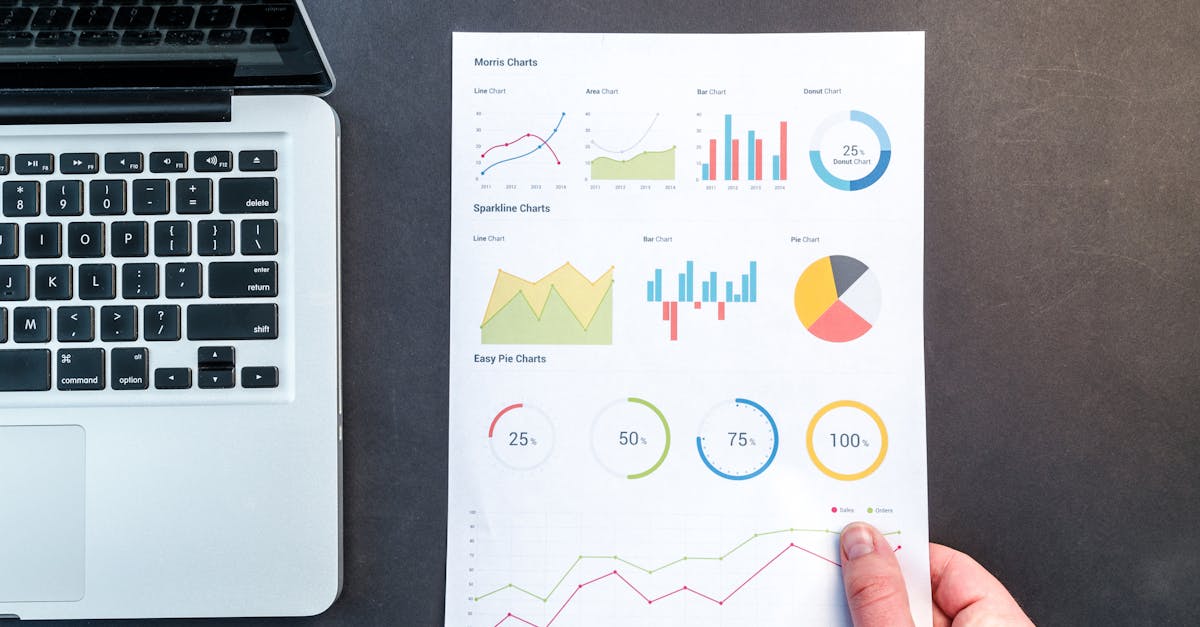
March 31st, 2025


Written by Bobby Abrams
Data-driven management isn’t just a buzzword—it’s a transformative approach that empowers us to refine our strategies and drive sustainable growth, especially in the dynamic world of Google Shopping. At EClickPro, we believe that by harnessing data wisely, you can turn raw analytics into actionable insights, ensuring that every campaign dollar is spent with purpose. In this blog, we’ll dive deep into how data-driven management transforms Google Shopping efficiency and leads to sustainable growth, outlining key metrics, optimization techniques, and future trends.

Data-driven management is about making decisions based on verifiable data rather than gut feeling alone. In Google Shopping campaigns, this approach means constantly measuring performance, adjusting bids, optimizing product feeds, and refining ad copy based on real-time metrics. By focusing on data, we can eliminate inefficiencies, lower wasted ad spend, and ultimately maximize return on investment.
Google Shopping is unique because it’s visually oriented and relies on continuous optimization. Here’s why data plays a critical role:
Data allows us to segment audiences based on behavior, geography, and search trends, ensuring that ads reach the most likely buyers.
Analytics help in allocating budgets where they perform best, reducing wastage and maximizing conversions..
With live data, strategies can be tweaked on the fly, adapting to seasonal trends or sudden changes in consumer behavior.
Key performance indicators like click-through rates, conversion rates, and cost-per-click directly influence decision-making and long-term strategies.
To fully leverage data for Google Shopping, businesses need to understand both broad trends and granular details. At EClickPro, we not only gather data but transform it into meaningful insights that drive actionable results. Below are the key aspects of harnessing data in Google Shopping:
Before making any strategic decisions, it’s imperative to collect the right data. This involves:
Ensuring that Google Analytics, Google Ads, and other tracking tools are properly integrated.
Using a reliable tag management solution to capture user interactions and conversion metrics without slowing down site performance.
Gathering data from product feeds so that attributes such as price, availability, and imagery are always up-to-date.
Once data is collected, the next step is analysis. At EClickPro, we dive deep into campaign data, analyzing performance trends, understanding seasonal fluctuations, and identifying the opportunities that drive growth. Key activities include:
Reviewing historical data to identify peak buying periods or emerging trends within the market.
Breaking down data by demographics, device type, or geographic region to personalize ad strategies.
Setting benchmarks for click-through rates, conversion rates, and return on ad spend to gauge what success looks like.
For Google Shopping campaigns, not all metrics are created equal. Focusing on the right KPIs can provide better clarity and drive more accurate optimizations. Here are some of the main metrics to monitor:
Indicates how effectively your ads capture interest. Conversion Rate: Measures the percentage of visitors who complete a desired action after clicking through.
Measures the percentage of visitors who complete a desired action after clicking through.
Helps in determining the efficiency of your spend.
Shows the percentage of times your ads appear compared to the total available opportunities.
Focuses on top-performing products vs. those that need optimization.
Implementing a data-driven approach requires both the right strategies and the tools to execute them effectively. Here are some techniques we prioritize:
With automated bidding, machine learning algorithms adjust bids in real-time based on performance data. This can lead to:
Bidding adjustments happen in milliseconds, ensuring that ad spend is allocated to the best performing segments.
By bidding more where you are likely to win and less where competition is lower, you maximize returns.
Automation reduces the risk of human error, ensuring that campaigns remain effective even during periods of rapid change.
Predictive analytics leverages historical data to forecast future campaign performance and consumer behavior. When applied to Google Shopping, it provides insights that help in:
Anticipate product demand and adjust budgets accordingly.
Identify which products or categories are likely to see increased engagement in the near future.
Make proactive changes ahead of major shopping events or seasonal shifts.
Advanced reporting tools make it easier to visualize data and gain insights at a glance. These tools support:
Tailor-made dashboards that provide real-time insights into campaign performance.
Detailed reports that track each metric, ensuring that every aspect of your campaign is optimized.
Charts, graphs, and heat maps that simplify complex data sets, making trends easy to spot.

At EClickPro, our approach to data-driven management is integrated into every step of our Google Shopping campaigns. We leverage our deep expertise and advanced tools to ensure that every decision is backed by hard data. Here’s how we implement these strategies:
Each client works with a dedicated Project Manager who understands the nuances of data-driven marketing and Google Shopping. This hands-on approach guarantees that:
Every campaign is tailored to meet the unique needs of the business.
We give you clear, regular updates so you know exactly how campaigns are performing.
Data insights are used to tweak strategies in real-time, ensuring continuous improvement.
Our data-driven strategies have led to impressive outcomes. For instance, our approach has achieved:
These numbers aren’t just statistics—they represent tangible growth and enhanced efficiency, outcomes that every business strives for in a competitive digital marketplace.
No system is without its challenges. Implementing a successful data-driven strategy requires overcoming several hurdles:
One major challenge is ensuring data from different sources comes together seamlessly. Data silos can lead to missed opportunities and inefficiencies. Overcoming this involves:
Using tools that consolidate data from various sources into a single dashboard.
Encouraging cross-team discussions between creative, technical,
Encouraging cross-team discussions between creative, technical, and strategic departments to ensure everyone is aligned on metrics and goals.
Regularly auditing and cleansing data to ensure consistency and accuracy.
While automation and AI are powerful, human insight still plays a critical role. It’s essential to:
Regular audits of automated bids and adjustments to ensure they align with broader strategy.
Rely on seasoned professionals to interpret data in context, adding nuance to algorithm-generated insights.
Ensure that automation tools have the ability to adapt to unique business scenarios that may deviate from standard patterns.
The future of data-driven management in Google Shopping is intertwined with advancements in technology. Here are some trends that we are excited about and already integrating into our strategies:
AI is reshaping how campaigns are optimized. Here’s what it brings to the table:
Machine learning can predict performance trends much earlier, allowing for proactivity rather than reactivity.
Algorithms can test multiple creative variations and allocate budget to the best performing ones in real-time.
AI drives smarter budget distribution by continuously learning and adapting based on campaign success.
We are moving toward a future where data isn’t just descriptive but predictive. Harnessing predictive analytics enables us to:
Understand emerging trends before they fully develop.
Forecast demand more accurately, ensuring that the right products are highlighted at the optimal time.
Deliver highly targeted campaigns based on anticipated consumer behaviors.
For many businesses, online and offline data can be combined for a holistic view of performance. This strategy improves:
By understanding offline behaviors, we can better predict online purchasing patterns.
Aligning offline sales data with online campaign performance ensures every dollar is maximized across channels..
A more comprehensive data set leads to more refined strategies and ultimately better business outcomes.
To integrate data-driven management into your Google Shopping campaigns, consider the following step-by-step approach:
Start by auditing your current data collection methods and setting clear, measurable goals. Ask yourself:
Select the right tools to gather and analyze data. Whether it’s integrating Google Analytics more deeply or using third-party reporting platforms for granular insights, ensure that all systems are fully synchronized with your Google Shopping campaigns.
Establish a routine for reviewing your data. This routine should include:
Educate your team about the importance of data in decision-making. Ensure that marketing, sales, and product teams share insights and adjust strategies collaboratively. This unified approach makes it easier to implement changes quickly and effectively.
Use controlled experiments to determine which strategies deliver the best results. Whether testing different ad creatives, bid strategies, or product descriptions, A/B testing is an invaluable tool for continuous improvement.
Although data-driven approaches lay a solid foundation for digital marketing success, there are important challenges to consider to maintain growth over the long term:
Relying on flawed or incomplete data can lead to misguided strategies. Regular audits and third-party validations help maintain high data integrity.
As data collection intensifies, adhering to privacy standards and regulatory requirements becomes even more crucial.
Not every business has a large team of data analysts. Balancing outsourced expertise with internal efforts is key to maintaining efficiency without overspending.
The digital landscape is ever-changing. Strategies must remain flexible enough to incorporate new data trends and technologies as they emerge.
Adopting a data-driven management approach can dramatically transform your Google Shopping campaigns. By relying on real-time analytics, predictive insights, and continuous optimization, businesses can not only improve efficiency but also secure sustainable, long-term growth. At EClickPro, we’ve seen first-hand the benefits of embracing a data-oriented strategy—whether it’s reducing ad spend wastage or driving a substantial increase in revenue. Our mission is to empower our clients with transparent, measurable, and personalized strategies that translate data insights into real-world success.
We invite you to explore how a data-driven, results-focused approach can revamp your Google Shopping performance. If you’re ready to harness the potential of comprehensive data analysis and cutting-edge digital marketing strategies, consider reaching out for a free, expert-led audit. Learn more about our tailored strategies and see the tangible benefits of partnering with a dedicated team of specialists at EClickPro.
In today’s digital era, sustainable growth isn’t just possible—it’s imperative. With data as your guide, you can transform your Google Shopping campaigns from a simple sales channel into a powerful engine of growth. We’re excited to help you navigate this journey, ensuring that every click, every impression, and every conversion contributes to a robust and sustainable digital strategy.
Thank you for joining us on this exploration of data-driven management in Google Shopping. We look forward to collaborating with you and turning analytics into tangible results for your business.

Bobby Abrams specialises in helping businesses achieve better results. With a decade of sales and consulting experience, he has worked with hundreds of companies across different sectors. Bobby is passionate about using the latest technology to shape strategy and works closely with expert teams to deliver impactful projects on behalf of his clients.
The information on this website is for general guidance only. EclickPro provides digital marketing services including SEO, Google Shopping, and Meta Ads, but results vary by client and are not guaranteed. We do our best to ensure accuracy, but we do not accept liability for actions taken based on this content. For personalised advice, please contact us directly.